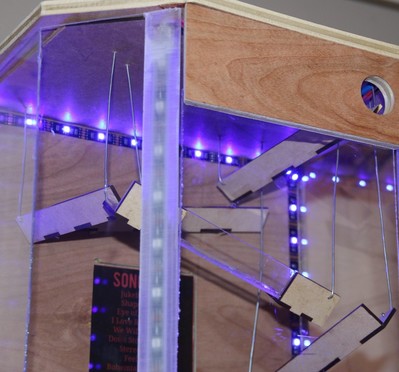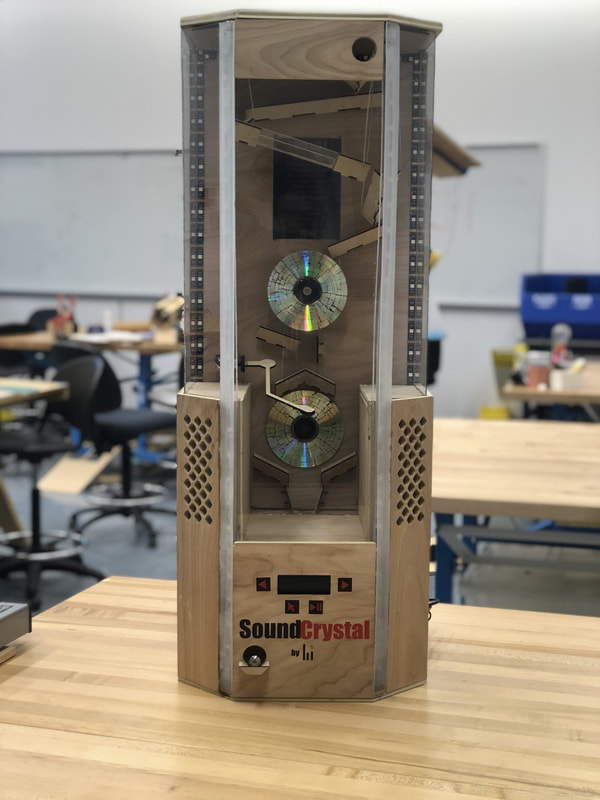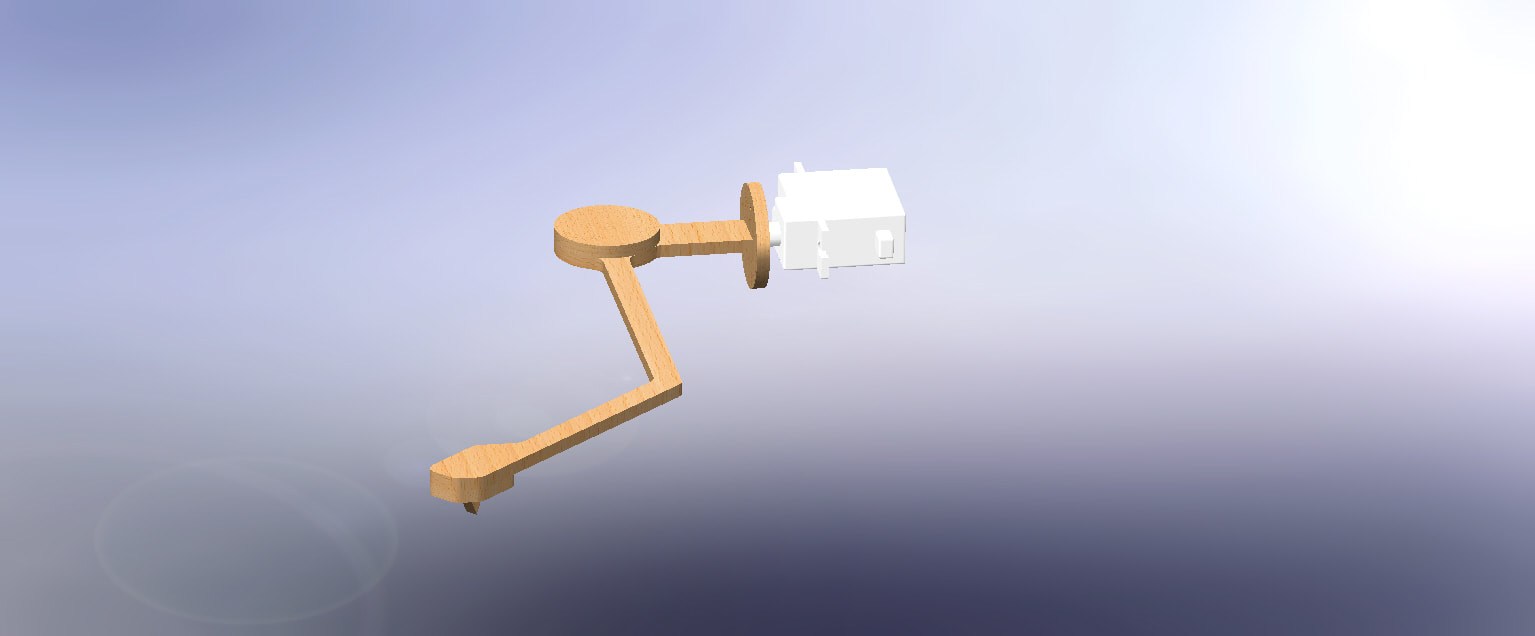Overview
Our mechanical system not only holds everything together, but also dominates the aesthetic appearance and interactivity of the SoundCrystal. The housing supports the electronic components, and includes the actively spinning CD, moving record needle, and marble run. Each of these components were crucial to creating an aesthetic and functional product, demanding careful attention to each facet.
Housing For our final product, we decided to redesign the common structure of a jukebox to fit our needs. This design was created after our second sprint where we realized that there were many modifications needed to satisfy large and small goals for this project ranging from, an interactive jukebox experience, to neat wiring. Instead of using the typical jukebox design with a boxed center, arch top, and clear tubing around the edge, we decided to create more of a modern, tower-like structure with more visibility to what is going on inside. By having a transparent encasement, it allows the user to interact and experience our jukebox, the SoundCrystal. Stock: Birch Plywood and Plexiglass Machines Used: Laser Cutter, Table Saw, Chop Saw, ShopBot CNC |
Record Needle
The record needle mechanical system is simply a needle attached to a servo. The servo tilts the needle arm in the Y-Z plane when the song starts or stops. The needle is mounted to the servo needle with string threaded through the holes. The record display also includes a record which is mounted to a DC motor that spins when a song is playing. The needle arm was laser cut from MDF stock and the record was an old CD microwaved for the crackled effect.
Marble Run

The marble run originated to integrate a more significant interactive element. The user now activates the SoundCrystal by taking the provided marble and inserting it at the top, inspired by jukeboxes requiring coins to play. As it cascades down the entire height, the marble runs by several points of interest. It draws attention to the song list, passing in front of it on a clear panel, then spins a CD attached like a waterwheel, all before falling to either side around the record needle's spinning CD. After entering the casing, a hidden activation switch is pressed as the marble makes its way back out the front, ready for re-insertion. After several iterations with materials and shapes, the final marble run tracks are crafted of lasercut MDF, save for the special plexiglass panel.
Create a free web site with Weebly


